This is the last article I write for 2022. This is an interesting take on the future of transport in Kenya since we are in the evolving stage of modern developments through various projects and devolutions — starting with the Nairobi Metropolitan. While Vision 2030 is yet to be a dream come true for Kenya, we are still far from reaching that dream. In my opinion, we need to pull up our socks as a nation, there is so much potential — development-wise — in technological aspects.
The current state of Transport systems
Just this year on 14th May 2022, the Nairobi Expressway was opened to the public after a construction period of about three years since 2019. The new transport network was designed to ease the overbearing traffic in the capital city and provide seamless access to the Jomo Kenyatta International Airport and its environs. The Expressway was constructed under a public-private partnership between the government of Kenya and China Road and Bridge Corporation (CRBC). Accessing the Expressway is via a cash payment option, a preloaded card option (and an MPESA payment option soon from January 2023) with attendants at each toll station to assist motorists.
While the Expressway has been operating till now, the objective to ease traffic is still not 100% met due to financially able motorists, lest forgetting some of the backlash by Nairobi residents during the construction and after the completion in reaction to pricing and accessibility of vehicle categories. (Kenyans being Kenyans, got to love this country). Back and forth, Nairobi governors from old and newly elected have tried ideas yet reasonable ones to control traffic flow. So, what else was considered a plan in motion was removing matatus from CBD to decongest the city space and minimize vehicle traffic on certain days…and there is the whole emergence of Electric Buses in Kenya.
Yes, the Electric Buses in Kenya are one of my expectations to see in 2023. Before I get to say that expectations are the thief of joy, you have to understand the city’s transport systems available, public transit (road and rail). We still await seeing the launch of BRT buses since it was proposed and announced to become an actual reality. And that being said, electric buses are becoming a reality already and I am optimistic about it. Two companies, namely BasiGo and ROAM Electric (formerly called Opibus Ltd) have been dominating the modern transport planning sector and giving each other stiff competition in the market. BasiGo has been pulling in investments of up to KES 500 million as seed funding. ROAM Electric, well no specific investment overall data has two products, ROAM Air for electric motorbikes and ROAM Rapid for electric buses.
The Experience with An Electric Bus.
Back in November, a friend and former collegemate, Francis Kamala shared a photo of one of the buses when he boarded from Belle Vue stage to CBD on his way to work. I got curious to find out how the buses operate. He briefed me on the experience and then the conversation turned into a sort of information interview on WhatsApp chat and call. After the conversation, he sent pictures and videos documenting the whole appearance of the bus inside and showing the features around the bus.
The interview went a little like this;
Me: Tell me what you do as an individual in Nairobi.
Kamala: Just small small tech stuff….as junior tech bro, ha-ha.
Me: What’s been your current mode of transport?
Kamala: I think I’m a 99 per cent public transport user on a day-to-day user, and the 99 equals 98 per cent Matatu and 1 Boda Boda that’s if I decide kujipongeza…won’t be 100 % because the other 1% is taxi on days I’m unwell.
Me: What are your thoughts about the Kenyan modes of transport currently?
Kamala: Current modes of transport …hmm. Well, I believe there’s room for some improvement but that would mean a lot of change which I am not sure would be welcomed by many.
Me: How did you discover Roam Electric?
Kamala: 50% luck, 50% curiosity. I was heading to town as I always do pick a mat at Bellevue, and I noticed this bus coming up and it’s not our normal transit bus. At first, I felt like, aii hii haiezi kuwa inaenda town but yep, the guy says 50 bob town and I’m in. Nikaacha KBS na Hoppa hapo..and yeah, there goes the 50/50. So, on the way to town, questions just came and the bus attendant, a good guy, answered all my curious questions as we headed town.
Me: What was your experience using the electric bus for the first time?
Kamala: To be quite honest, it was just so good, you wish you had on every public means bana …like when last did you even use a mat that has an AC that actually works?? Like NEVER…
Me: Is there a promising aspect of electric buses’ dominance in Kenya? If so, why?
Kamala: I would say, yes. E-mobility seems to be something that is slowly gaining speed in Kenya, more so in Nairobi as the capital, which seems like the starting point but with more charging stations and good planning this surely could bring in dominance. For Example, you have ROAM Motors providing conversions of fuel cars to electric ones they call that the ROAM Move and also guys like BasiGo which we saw are also doing E-mobility doing more imports for electric buses too so I honestly do think this transformation can happen.
Me: What are your expectations of electric buses in Kenya?
Kamala: Well, I do expect a wider network but for a start, this can be something to go for not only as passengers but also, I think public transport providers would look to jump in cost wise looks good for them too…
What I learnt is that he was lucky to be part of that test day of commuting with ROAM on Mombasa Road, as ROAM had to do their marketing as well. ROAM Rapid has a charging station at Cabanas, where they park their buses and depart in the morning from Cabanas to CBD then out of CBD through Thika Superhighway. At that time, Kamala learnt that because the testing had commenced, there weren’t a lot of passengers to be carried for a period of time, it could also reach up to Makongeni on days there was no traffic.
Specs of the Bus (ROAM Rapid)
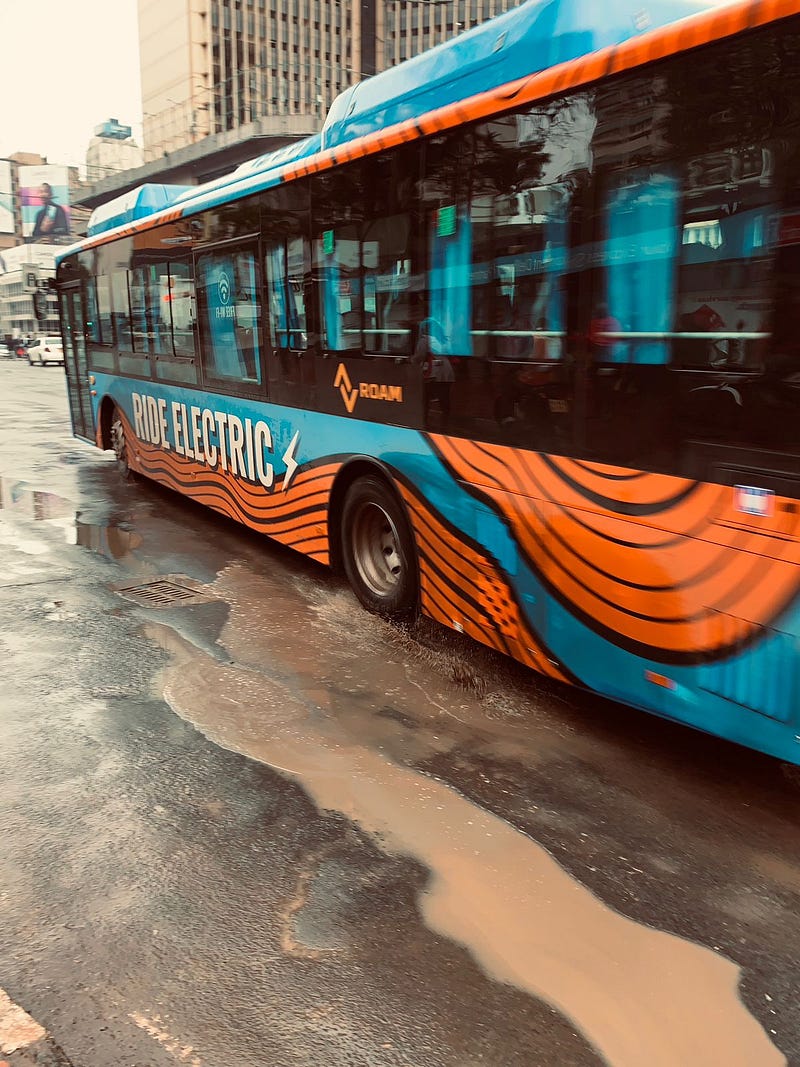 |
| ROAM Rapid Electric Bus in the CBD, shot by Kamala. |
Battery Capacity: 384 kWh
Range: 360 km
Dimensions: 12500 by 3300 by 2550 mm
Top Speed: 70 km/hr.
Seat Capacity: Up to 90 passengers
Weight: 18,000 kg
Charging Time: under 2 hours
Gallery:
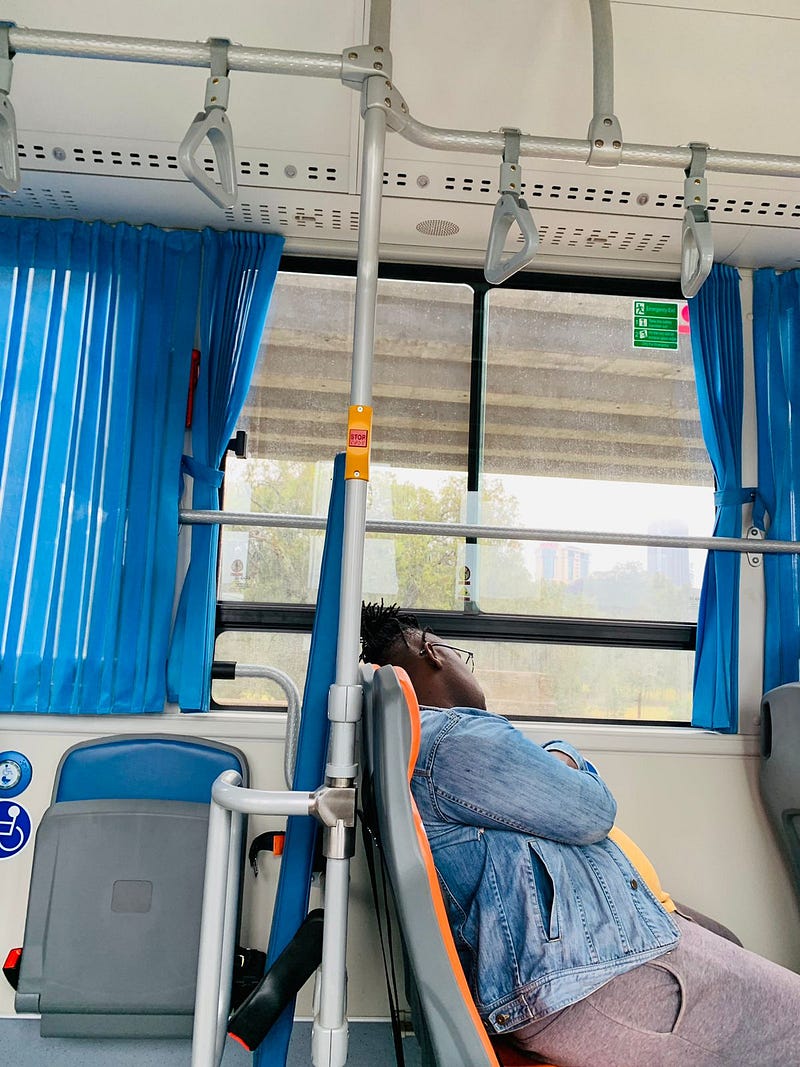 |
| Inside, the passenger resting on his commute. Shot by Kamala. |
 |
| Another section of the bus, shot by Kamala. |
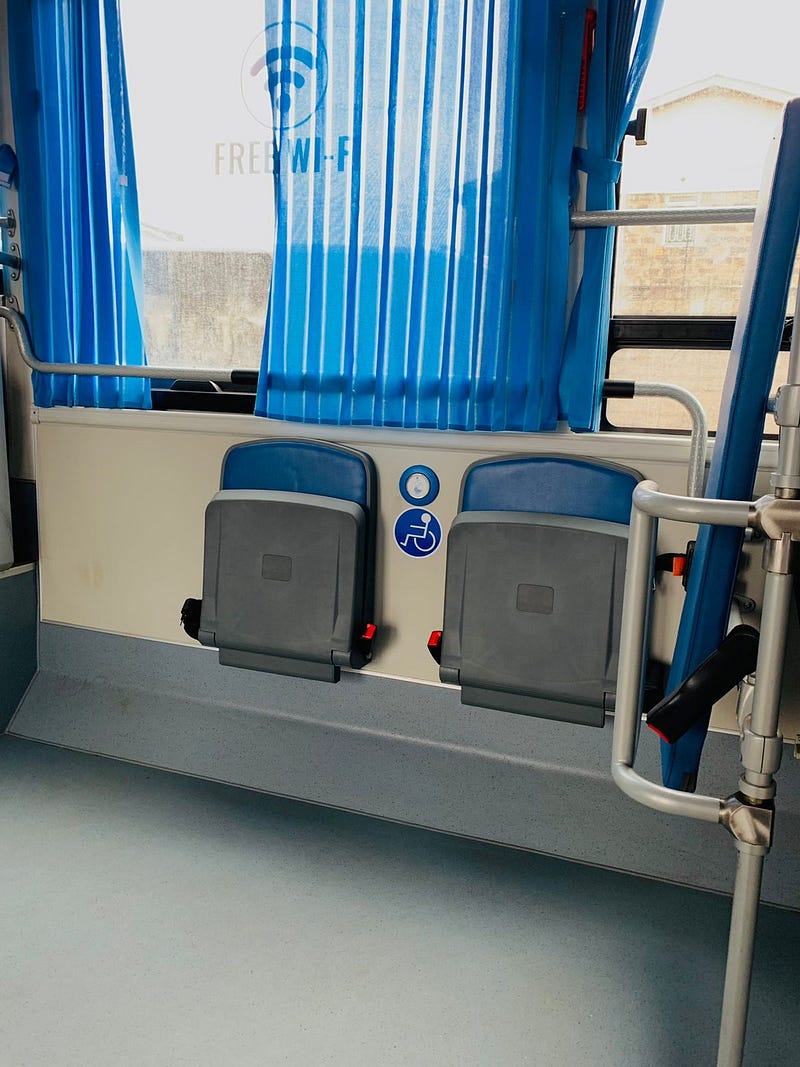 |
| Section for people with special needs, shot by Kamala. |
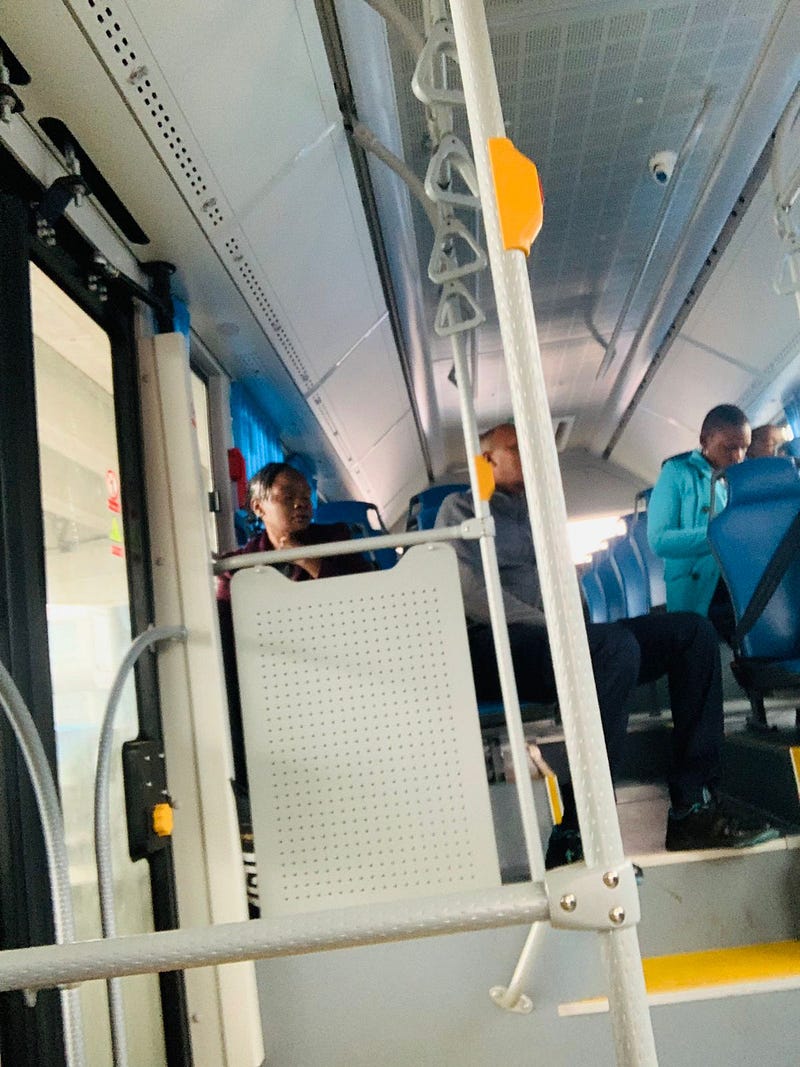 |
| Doorway next to the passenger seat section, shot by Kamala. |
 |
| Passenger seats, low and raised variety. Passenger hanging handles attached to the bar, shot by Kamala. |
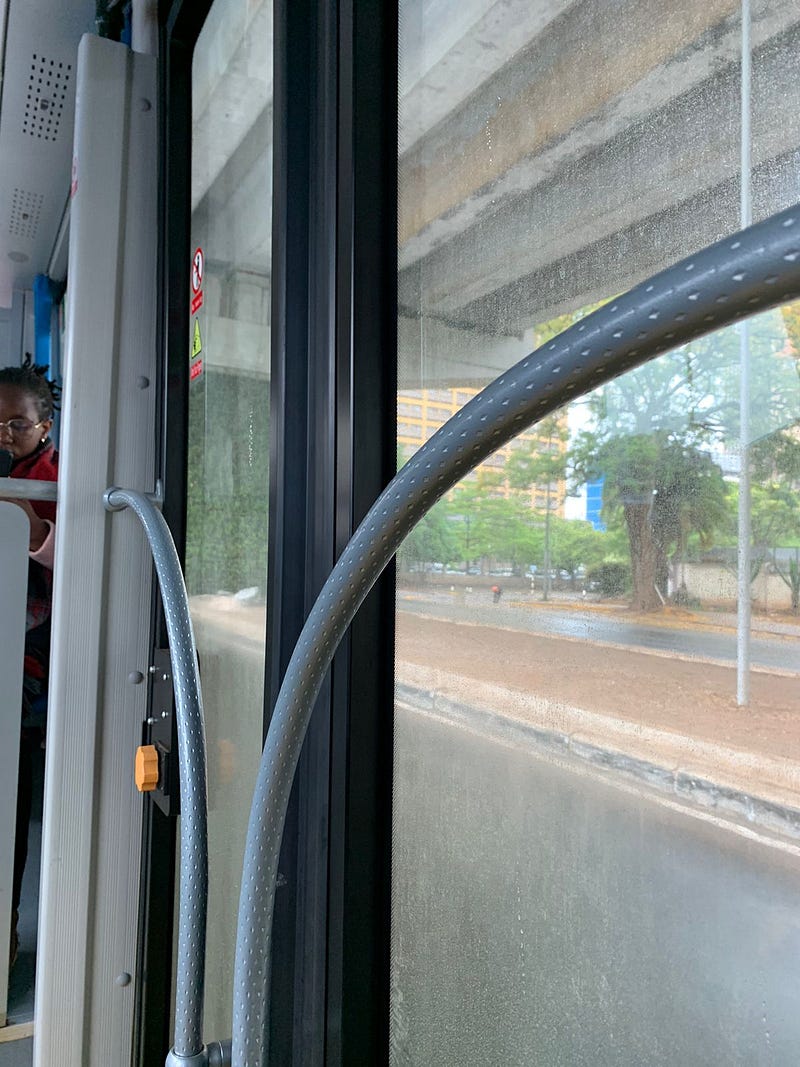 |
| Closed doorway, shot by Kamala. |
The electric buses are charged once a day for KES 5,000. Compared to normal buses, which are fueled at KES 16,000 a day, electric buses are cost-effective. The AC works well on the bus, a worthwhile feature. A button for stopping the bus for alighting is provided, no need to hit the roof of the bus or yell at the driver. The fare was paid ordinarily on that day like matatus, with the option for MPESA included. Because it was a test drive, fares are yet to be listed once all systems go after full investment and after the buses are ready.
What to expect in the new year
More electric buses are on the way to Kenya and commuters are going to see a few changes in the transport sector. Some Matatu Saccos have always linked deals and partnerships with BasiGo like Citi Hoppa and Super Metro. Both Saccos have plans to purchase about 10 to 15 electric buses for various routes in the metropolitan area and replace old matatus in the future. ROAM Air will also provide electric motorbikes for urban and rural areas as they continue their marketing strategy.
While traffic will still be a common issue, at least switching to energy-friendly automobiles is a good promising start…well, that is if Kenya Power and Lighting Company do their investment right this time because they are the sole operation in this project for providing charging stations and electricity. Otherwise, KPLC and their reputation? Not so good in this country.
Go to BasiGo (basi-go.com) and Roam (roammotors.com) to learn more.
Acknowledgements to Francis Kamala for his time and effort in sharing the information and media exploring the ROAM Rapid buses.

